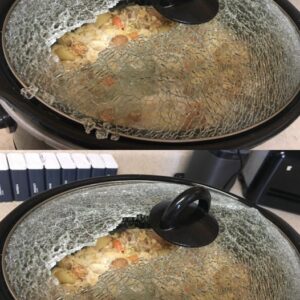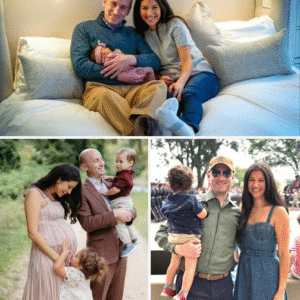Dr. Amara Johnson Steps Into Meridian Gallery
Rain pelted the floor-to-ceiling windows of Manhattan’s Meridian Gallery as Dr. Amara Johnson entered. At 42, she was a leading expert in contemporary African American art, holding a PhD from Columbia and consulting for major museums worldwide. Yet, she appeared as just another visitor—dark jeans, worn sneakers, a black sweater, hair tied in a neat bun. A small leather portfolio under her arm hinted at her true role.
Over fifteen years, Amara had transformed Meridian from a small Brooklyn storefront into a powerhouse showcasing some of the world’s most significant contemporary artists. Her mission: highlight diverse voices while maintaining top-tier curation. Today, she visited unannounced to see how her staff treated potential clients when they thought no one was watching.
The First Encounter
The gallery buzzed with collectors and art enthusiasts. Amara paused before a mixed-media piece by Kehinde Williams, a rising artist she represented.
“Excuse me, that piece requires special handling,” said Chelsea Morrison, a senior sales associate, with visible irritation.
“I’m just looking,” Amara replied.
Chelsea’s condescending tone implied Amara didn’t belong near expensive works. Amara moved to a $25,000 photograph by Maria Santos, an immigrant-focused series with personal resonance.
“Are you interested in any particular artist?” Chelsea asked, hiding disdain behind professionalism.
“I’m interested in Maria Santos,” Amara said.
Chelsea dismissed the work. “It’s documentary photography—not what most serious collectors focus on. If you prefer photography, we have Robert Mapplethorpe prints in the back room.”
The suggestion that Amara should prefer a famous white artist over the emerging Latina she represented was telling. Amara stayed composed, testing how far the assumptions would go.
Gatekeeping in Action
Amara asked about the $180,000 Williams piece. Chelsea said only pre-qualified clients could view it.
“How does one get pre-qualified?” Amara asked.
Chelsea scrutinized her casual attire. “We usually work with clients who have established relationships or references. Do you have experience collecting contemporary art?”
“I’ve been collecting for years,” Amara replied.
“Your budget?” Chelsea pressed.
“I prefer to know the pieces before discussing numbers,” Amara said. Chelsea’s suspicion deepened.
Other staff watched silently. Amara suggested looking at $10,000–$15,000 pieces. Chelsea’s relief was obvious, and she guided Amara to secondary works. While competent, they were not Meridian’s signature offerings.
The Commission Test
Amara asked about commissioning an artist directly. Chelsea hesitated. “Depends on the client and project. We must protect our artists’ reputations.”
Amara pressed: “Even for substantial commissions?”
Chelsea offered vague answers, implying Amara might harm the artists’ reputations.
Finally, Amara asked to speak with the gallery director—herself. Chelsea insisted appointments were needed, citing busy schedules. Amara offered a six-figure purchase, yet Chelsea still doubted her.
The Verification Demand
Chelsea led Amara to an office and presented a detailed client qualification form. It demanded financial statements, references, and collecting history—before even viewing artwork.
“This seems extensive. Do all clients provide this?” Amara asked.
“Only for premium pieces,” Chelsea replied.
Amara recognized false claims. No gallery standard required such pre-verification merely to view art. Chelsea claimed insurance mandated it, but this was untrue.
James Fletcher, assistant director, appeared. Chelsea explained the “policies.” James suggested secondary pieces while documentation processed. Amara saw clearly: this was exactly the gatekeeping she fought to eliminate, preventing collectors from underrepresented communities from accessing top-tier works.
The Test Continues
Amara maintained composure, observing how staff assumptions and biases influenced interactions. She noted the condescension, exclusion, and misjudgment of her authority. What she witnessed would force changes to how Meridian treated potential clients and reflected the systemic barriers that persisted in elite art circles.
The Revelation
Amara had seen enough. Her staff’s behavior was not only unprofessional but also violated every principle she had built Meridian Gallery upon. It was time to act.
“I think there’s been a misunderstanding,” she said, standing with quiet authority. “I don’t need to fill out forms to view artwork in my own gallery.”
The room fell silent. Chelsea stared in confusion, while James’s skepticism turned to dawning horror.
“I’m Dr. Amara Johnson,” she continued calmly. “I founded this gallery fifteen years ago. Today, I watched how you treat potential clients who don’t match your assumptions of a ‘serious collector.’”
Chelsea’s face went pale. James instinctively stepped back.
“Following what?” Amara asked pointedly. “Protocols that don’t exist? Policies that contradict everything this gallery stands for? Or your own prejudices?”
Chelsea could not respond. Her confidence had evaporated.
“Here’s what I observed,” Amara said. “I was judged by appearance, directed away from artists of color toward established white artists, and told I needed protection from wasting time with the very artists I support. This is unacceptable.”
Immediate Consequences
Amara acted swiftly. She called an emergency meeting with all staff to address both the incident and the larger systemic issues it exposed.
“Today wasn’t an isolated mistake,” she explained. “It reflects attitudes tolerated here far too long. That ends now.”
Chelsea was terminated immediately for her discriminatory behavior and unauthorized policies. James faced disciplinary action but was retained after showing genuine understanding and willingness to improve. Miranda Chen, who had observed without intervening, was reassigned and required to complete additional training on inclusive customer service.
Systemic Changes
Amara implemented comprehensive reforms at Meridian. Staff completed intensive training on unconscious bias, inclusion, and the gallery’s mission. Role-playing exercises, case studies, and ongoing assessments ensured staff treated all clients with respect.
New oversight procedures included mystery shoppers, regular review of client interactions, and anonymous feedback systems. Client protocols were overhauled. Financial verification would occur only after a client decided to purchase—not before viewing artwork.
Amara herself began visiting unannounced in casual attire, observing staff interactions firsthand to ensure reforms were sustained.
Industry Response
News of the incident spread quickly. Many gallery owners and museum directors praised Amara’s proactive approach. Several institutions adopted similar training programs and oversight methods.
Some critics argued Chelsea’s actions were isolated and overblown. However, collectors and community leaders supported Amara, sharing their own experiences of discrimination and increasing patronage at Meridian to support its inclusive approach.
Personal Impact
For Amara, the incident was both disappointing and affirming. Disappointing, because discriminatory attitudes persisted despite her vision. Affirming, because it reinforced her commitment to inclusive practices.
“I built this gallery to celebrate and support artists from all backgrounds,” Amara reflected. “What happened reminded me that inclusion requires vigilance, not just good intentions.”
Artists appreciated her decisive action, noting the systemic reforms strengthened trust and reinforced her support of emerging artists of color.
Long-Term Changes
Two years later, Meridian had become a leader in inclusive practices. Its client base diversified, strengthening business and introducing new collector networks. Artists represented by the gallery achieved major milestones, including museum acquisitions and critical acclaim.
Chelsea struggled to find work in the art world, her reputation tarnished. James Fletcher became a senior advocate for inclusion, helping train new staff members.
Cultural Impact
Amara’s experience became a case study in museum and gallery ethics. Universities, documentaries, and conferences highlighted Meridian as a model for addressing systemic discrimination. Other cultural institutions used the gallery’s reforms to examine and improve their own practices.
Ongoing Legacy
Five years later, Amara’s unannounced visits consistently confirmed staff commitment to inclusive service. Meridian expanded to a second location and launched an online platform, making contemporary art accessible to historically excluded communities.
She established a foundation providing grants to underrepresented artists and funding educational programs in contemporary art. These initiatives were supported in part by revenue from the gallery’s expanded and diversified client base.
The Final Reflection
The afternoon when Amara was treated as an unwelcome visitor became the start of a new chapter. Meridian transformed from a gallery with potential discrimination into an industry leader in authentic inclusion.
The experience proved that positions of power carry the responsibility to actively promote justice. Through courage and commitment, Amara turned a painful moment into lasting, positive change—demonstrating that inclusive institutions require vigilance, ongoing dedication, and the willingness to implement difficult reforms.





